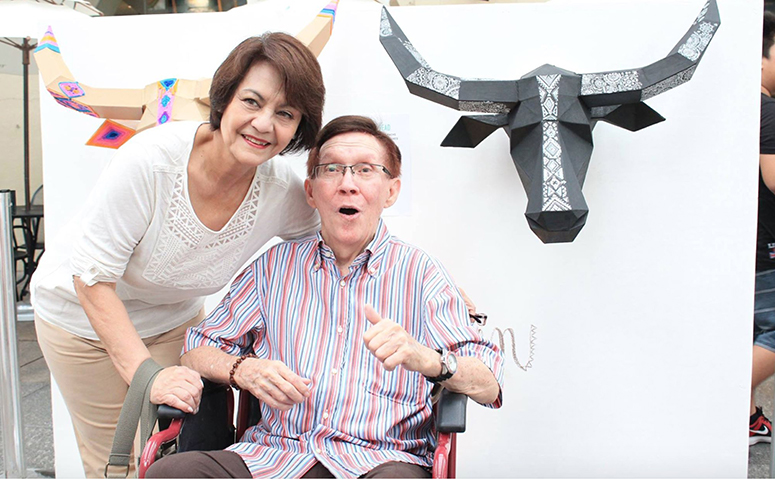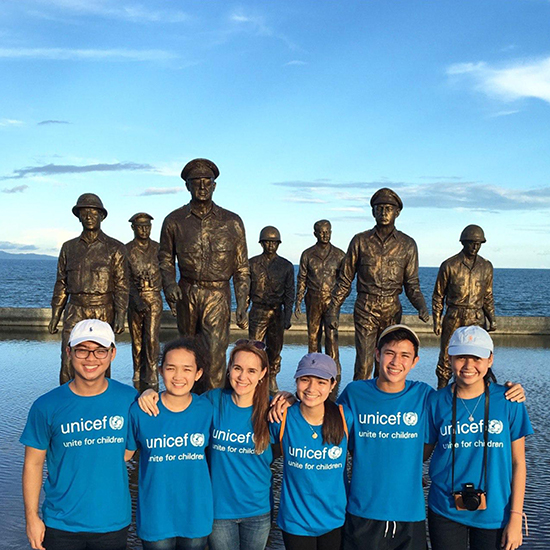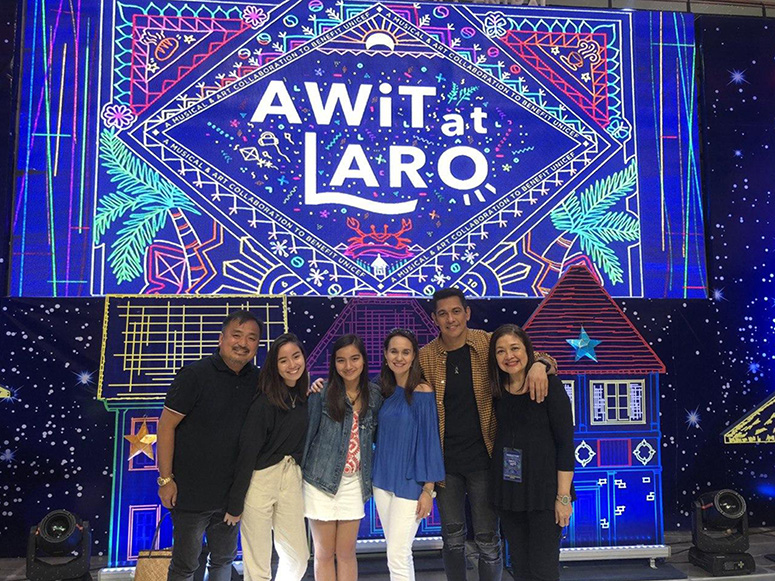How my children raised me
When people ask me how I raised my kids, I never know what to answer. Because, honestly, I am no parenting expert. I like to view myself as more of an unconventional type of parent — thinking as if no box existed in the first place, instead of confining myself in it.
The secret to this somewhat unusual parenting practice was my being raised by my own unconventional parents, and understanding that there is no one formula in raising a child. No “perfect” way, no one book or manual that can explain how to raise a human being. But isn’t this what makes being a parent so special?
However, this article is not one of those “How to Raise a Child” types, for, again, it is not my expertise. I am here instead to just tell you the story of how my children raised me.
It took seeing my two daughters grow up to be the adults they are today to make me realize how your own kids can actually raise you, too — they can make you see what you never thought you could, they can make you understand things you never thought you would, and they can make you feel and imagine all the good in the world through the simplest of actions.
They say how you parent is a reflection of how you were raised. Growing up with a creative father and a giving mother, my childhood was magical.
It takes your entire being to understand these things, and so, in turn, you must understand their entire being as well. The whole mind, body and soul.
They say how you parent is a reflection of how you were raised. Growing up with a creative father and a giving mother, my childhood was magical. When I was born, my dad told my mom, “I’ll be the Prince, you be the Witch.” Thus my mom had no choice but to take the role of being the disciplinarian.

My father was the kind of dad who would declare, “No class today!” when the rain would be pouring outside. He would make us watch live fires like some sort of movie event. We owned a boutique toy store called Dimples in the ’70s. We enjoyed watching my dad fix the window displays. We would test his toys, and he observed how we would play with them.
Childhood with my father was crazy fun. Bedtime stories were complete with sound effects. He filled our house with all sorts of pets. Dogs, cats, ducks, hamsters, guinea pigs, birds, a talking parrot, lots of fish and even a baby hammerhead shark. The talking parrot? Oh, he would join us in the morning for breakfast.
There was a routine. Dad would open the sugar container, the parrot would perch on it and dig down for his sugar breakfast. Then one morning, we found the parrot stiff. As in, dead.
“What happened!?” my dad asked. Without batting an eyelash, my mom continued reading the morning papers, took a sip of her coffee, and said, “What else? He died of diabetes, Bob.” This was my mom. She never sugarcoated anything for us. She was the “reality check,” and my father’s balancer.
My parents were key players in how I raised my kids. Looking back at my own childhood, I took what I liked, and what helped me. I put myself in the shoes of my child and made decisions based on what I would like.
My mom was an honor student all her life. As in, all her life. But she was an honor student who never demanded honors from us. Her only requirement was “Just don’t fail.” I don’t know if this was reverse psychology, but it worked. She filled our lives with books upon books, and introduced me to a life of prayer at a young age.
My mom was a strong presence in my teen years. While my dad wanted to keep me home to just hang out and watch comedies on TV with him, my mom would be like, “It’s a Saturday night, why are you home? Call your friends, go out.” Believe me, it’s a line a lot of teenagers would love to hear. My parents opened our home to everyone. So they knew all our friends.
My mom was one who always said, “To those who have been given much, much is expected” — and this meant your time, talent and blessings in the form of anything. She got us (moreso me, because I was the eldest) involved in socio-civic activities in my teen years.
Creative Kids Studio was born out of my love for children, play, art and culture. Looking back, I believe this became the foundation of my daughters’ childhood.
The studio explored creativity not only through arts and crafts, but through visual arts, music and movement, puppetry, creative storytelling, cooking, mindfulness; to outreach workshops with abused kids and social workers, collaborative work with artists and craftsmen; to birthday parties, events and art exhibits for children.
My parents were key players in how I raised my kids. Looking back at my own childhood, I took what I liked, and what helped me. I put myself in the shoes of my child and made decisions based on what I would like. At the end of the day, Vince and I wanted our kids to be happy, well-rounded, creative and compassionate individuals who had the courage to be kind, in this crazy world we live in.
When Natasha and Isabella were only one and three years of age, before they could even talk or walk, they played with paint. Lots of white Cartolina paper on the floor — pouring and mixing them together gave them this sense of magic and wonder. As they grew up, it was always a fun challenge for me to see what other crazy, fun art activity they would enjoy doing next.

One day was paint, the next was homemade clay, then gooey cornstarch (gawgaw) with color, then fun with paper. I allowed them to paint their hands, feet, bodies and print themselves on huge sheets of paper. “Mamaaa? What if… what if we paint on a mirror? What that look like?” Then Bella would chime in, “What that FEEEEL like, Mama?”
My reply to their out-of-the-box ideas would be “Oooooh! THAT sounds like FUN!” Why did I even allow this? Because to a crazy Mama like me, it sounded like absolute fun. A 20-minute cleanup afterward was no big deal, if it meant giving my kids the opportunity to indulge their curious minds.
Music played a big role as well in their lives. Music was always playing from the time they got up in the morning, ’til the time they went to bed at night.
At the ages of four and six, my kids were bursting with creative ideas. I would present them with one thought, and they would multiply the possibilities. They would create little Valentine’s events for us, at home, complete with table decor setup, activities, games, and writing something nice about each other. They would design their own birthday parties and cakes, become my consultants for other children’s birthday parties, and designers for their own bedrooms.
Every day was something different. Monday night was Game Night, Wednesday was Movie Night, and Friday was Show Night. As they grew up, it became the outside experiences that thrilled them — from birthday parties under the rain, to trips their father would take them on, and other days it was random unexpected events like taking them to Disney World at 2 a.m. during the 24-hour summer party.
My kids brought me to their world, and I loved every minute of it. Because it put me in touch with the world of possibilities and pure joy.
Having no homework, being in a Maria Montessori school, was heavenly. They had a lot of time for creative activities, and a lot of time to play. I believe this fueled their imagination, to build something on their own, fostered by their own creativity. Although I felt something was missing. They were living in a bubble.
So at the ages of three and five, I asked my daughters to give me 12 toys they no longer played with. I told them about a little outreach daycare that needed toys. We spoke about the word “share.” A week later, I showed them photos of less fortunate kids playing with their toys. They proceeded to bring out more toys from their shelves and closet and asked me to give these kids even more.
In every sense of play, there was a somewhat bigger purpose. Whether it was building their individuality, creativity or imagination, the aim was to show them the endless possibilities of their capabilities. Including sharing their blessings.

Thus, when school began, instead of limiting them to the four corners of the classroom, it became my job to bring them out.
When my kids were eight and 10, I started to bring them with me to assist in these out-of-their-comfort-zone creative workshops. Some days, I would pull them out of school to come with me for an afternoon in Marilac Hills; another time would be for four days in Cebu with abused youth groups.
Again, they asked the hard questions, and I answered them all. Mutual respect between parent and child was important. So we answered every “Why?” question ever asked. Even the tough ones. Our communication lines were always open.
As they got older and entered high school, we continued with our art outreaches. This is when Creative Kids pivoted in 2015 to Kids for Kids. The art of being a parent is also knowing the art of letting go.
In 2015, I closed Creative Kids with a curated art exhibit called “Laro” with the participation of 130 kids. My kids chose UNICEF as the beneficiary of their art sale. What we thought would be the end of Creative Kids became the birth of Kids for Kids, as they decided it was time they became kids for others.
Tash and Bella ran Kids for Kids with their core team. We watched and learned. As it was a 100-percent youth-driven org. From concept to action, they came up with everything, and I watched on the sidelines as they showed me how this new world was unfolding. At 13 and 15, they grew their organization.
Their creative fundraisers, outreaches, drives — and even speaking events — now just became things Vince and I got invited to, showing us the end product of the constant meetings we would question them about. I realized then that I had now become their student.
This is what makes children special and unique — it’s the opportunity to see all the truths of the universe grow up right before your very eyes, and giving a gift back to the rest of humanity because, like they say, it takes a village to raise a child.
I believe that the seeds that were planted at a young age must have, unknowingly, dug deep into their core beliefs. Now, at ages 19 and 21, I saw how soulful they were during this pandemic. I saw how their first instinct and thought always went out to other people.
When lockdown began, they both immediately went online to check those communities that needed help. They gathered their team and thought of using the opportunity to educate, and give others a platform to voice out their personal advocacies. When the typhoon hit last November, they mobilized hundreds of people together with their partners to be able to reach out to as many victims of the calamity as possible.

Dinners then became opportunities for the kids to discuss social and political issues or events with us. We then found that, this time, it was us asking them the “Why?” questions.
My parenting journey taught me that kids can go beyond whatever we think they are capable of. A new generation is a new time. As the only thing constant in the universe is change, we must learn how to adapt, yet stay grounded in certain core beliefs.
My father once told me “It doesn’t matter what you take up in college, or what you become. The question I will always ask you is who have you lifted up today, and what are you doing in contributing to nation-building?” I would like to believe that parenting is nation-building.
It is never having a one-track mind, a single pathway; it is about molding the holistic being of this person. I am no expert, nor a professional in this field; I am just here, speaking as a parent who believed that my kids could teach me more than what I could teach them. I made sure that I listened to them, showed them the opportunity and the wonder our world holds, and how this was theirs to own.
This is what makes children special and unique — it’s the opportunity to see all the truths of the universe grow up right before your very eyes, and giving a gift back to the rest of humanity because, like they say, it takes a village to raise a child.
To all of you who have ever touched the lives of my children, one way or another, thank you for being part of our village.


